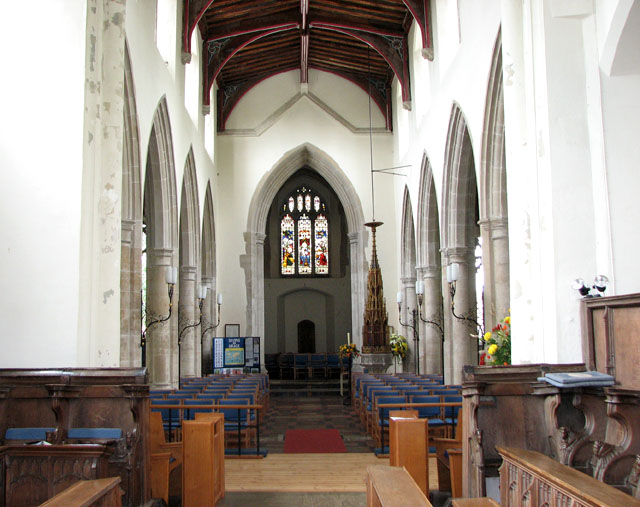St Gregory's church in Sudbury - view west
Introduction
The photograph on this page of St Gregory's church in Sudbury - view west by Evelyn Simak as part of the Geograph project.
The Geograph project started in 2005 with the aim of publishing, organising and preserving representative images for every square kilometre of Great Britain, Ireland and the Isle of Man.
There are currently over 7.5m images from over 14,400 individuals and you can help contribute to the project by visiting https://www.geograph.org.uk

Image: © Evelyn Simak Taken: 2 Oct 2010
St Gregory's church > http://www.geograph.org.uk/photo/2094569 as we see it today dates mainly from the 15th century but it was extensively restored in Victorian times and the stained glass windows > http://www.geograph.org.uk/photo/2094599 date from this time. The original rood screen panels > http://www.geograph.org.uk/photo/2094605 were overpainted in the 1900s. The choir stalls and carved misericords > http://www.geograph.org.uk/photo/2094614 in the chancel are medieval, as are the baptismal font and its tall cover > http://www.geograph.org.uk/photo/2094637. This cover is described as being one of the best preserved in the county. The niches > http://www.geograph.org.uk/photo/2094640 in the lower stages once contained saints. The cover is suspended from an iron rod in the roof and was formerly made to open out so that the font could be used. The church has two other notable survivals, one being an original panel of the medieval rood screen that for some time had been kept at the local museum. It depicts Sir John Schorn, who according to legend conjured the devil into a boot > http://www.geograph.org.uk/photo/2094621. The saint is represented only on three other rood screens, all of these in North Norfolk churches. An even older relic is kept locked away in the vestry. It is the mummified head of Simon of Sudbury > http://www.geograph.org.uk/photo/2094629 who partially rebuilt the church in the 14th century and had a college of secular priests built on the adjoining site of his father's house. After studying civil law abroad he was made chaplain to Pope Innocent and Judge of the Roman Court. Back in England, the pope made him Chancellor of Salisbury. In 1361 he was consecrated Bishop of London and translated to the See of Canterbury in 1375. He was made Lord Chancellor of England under King Richard II and in this function Simon of Sudbury is considered to have been the principal author of the Poll Tax - and consequently extremely unpopular. When in 1381 the peasants revolted he took refuge in the Tower of London but the guards allowed the rebels through the gates. He was seized and dragged to Tower Hill, and subsequently beheaded. His body is buried in Canterbury Cathedral but his head, after having been on display on Tower Bridge for some time, was sent to his home town, where it has since been kept in a small glass-fronted cubicle in the vestry of St Gregory's, the church that he had helped to build.

